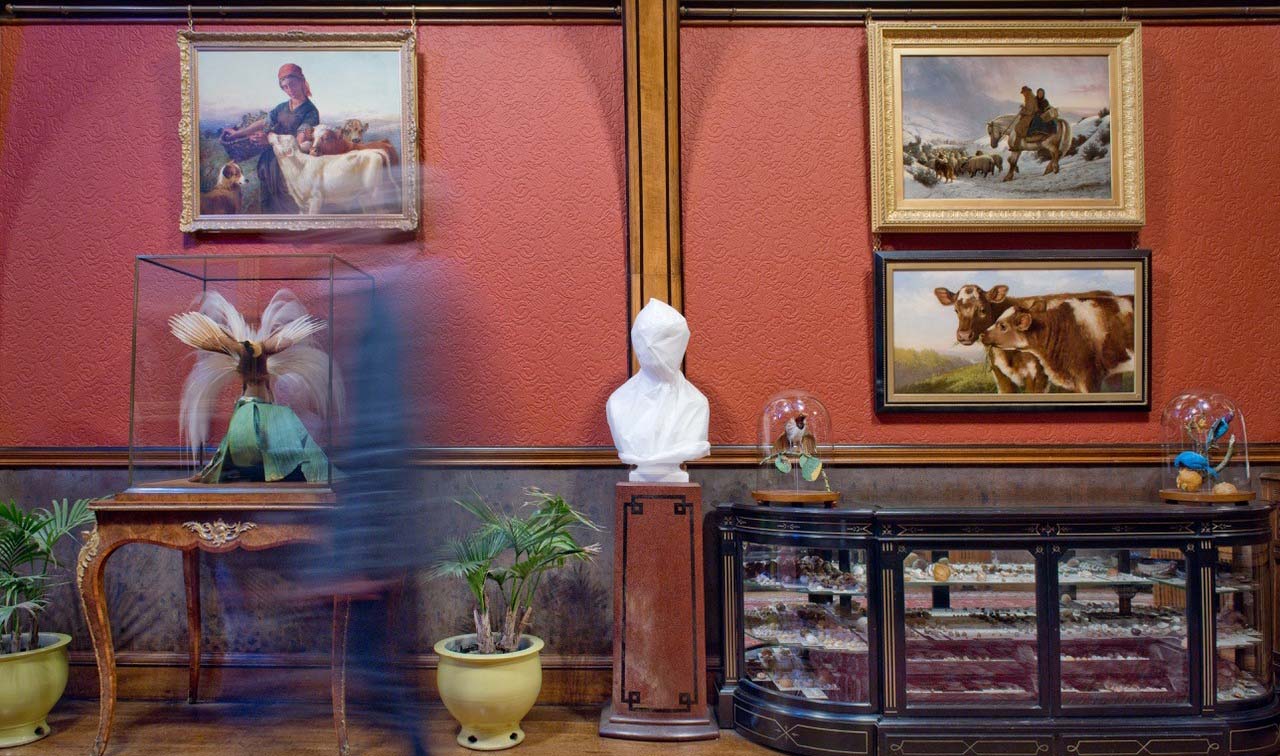Comment: Why contemporary art in historic settings
Comment: Why contemporary art in historic settings is important
Published on: 14 November 2018
Following the recent debate around the Cragside Cover-Up artwork by two of our PhD researchers, Professor Vee Pollock explains why contemporary art should be thought provoking and challenging.
In recent decades the practice of commissioning contemporary art for heritage sites has become a popular way for stately homes, museums and other historic places, to engage and attract visitors.
But while these programmes are designed to use new forms of artistic expression to encourage visitors to consider historic buildings, artefacts, people and places, in different ways, they can often prove controversial.
We saw this recently when work by two of our PhD researchers, Harriet Sutcliffe and Kate Stobbart, went on show at the National Trust’s Cragside; the house, gardens and estate famous for being the home of the Victorian industrialist, inventor and innovator Lord Armstrong.
The installation involved the literal covering up of representations of men through paintings and artefacts in Cragside. In so doing, Stobbart and Sutcliffe were highlighting the lack of female representation, including that of Lady Margaret Armstrong, present in the house.
Some reports might have you believe the house was veiled in the grand style of Christo and Jean-Claude, but rather the installation was purposefully only in a couple of rooms and a corridor so that visitors could then appreciate the counterpoint presented elsewhere in the house. I think it's also important to note the artists were using conservation material in the cover-up to ensure the artworks were not damaged.

Recognition of women's history
This bold idea formed part of a series of works with a ‘cover up’ in the garden using 4,000 sunflowers to highlight the thousands of anonymous women who worked at Lord Armstrong’s Elswick Works and Cragside. Another work used gestures to hint at the anonymous women of Cragside who have shaped the history, heritage and very materiality of the site.
Sunflowers and gesture might have been more palatable to some than the literal veiling of objects, but what the artists challenged us to consider, for a temporary three week period in Cragside’s 41 year history with the Trust, is whether the general lack of recognition of women’s history and fundamental role in shaping our heritage is in itself palatable.
The Cragside Cover-Up was part of the National Trust’s Women and Power programme, which marked the centenary of some women getting the vote, and was responding to the ethos of the Trust’s Challenging Histories programme. The artists and National Trust provided a critical, thought-provoking and, yes, challenging installation.
And while there was negative feedback, it’s important to note that other visitors had a different reaction. One said the idea was inspired, another applauded the artists and the National Trust for drawing attention to the poor representation of women, while another visitor said the idea should be rolled out across the whole Trust. One man said it was the first time he had realised what it felt like to be marginalised and another visitor said it made her and her husband re-evaluate what they see in historic houses.
Challenging and hidden issues
I strongly support our students producing thought-provoking work. Bringing our past alive in a critical way to inform and spark dialogues with contemporary issues is brave and risky, and more than this, important.
Here at Newcastle University, we are leading on an Arts and Humanities Research Council funded project, Mapping Contemporary Art in the Heritage Experience, which seeks to provide key insight into the experience of commissioning, creating and experiencing contemporary art from the perspective of artists, commissioners and audiences.
As organisations like the National Trust increasingly seek to commission works that engage with the challenging and hidden issues of our histories, we will continue to work with them to develop the critical dialogue, practice and policy that shapes the development of contemporary art for heritage sites.



